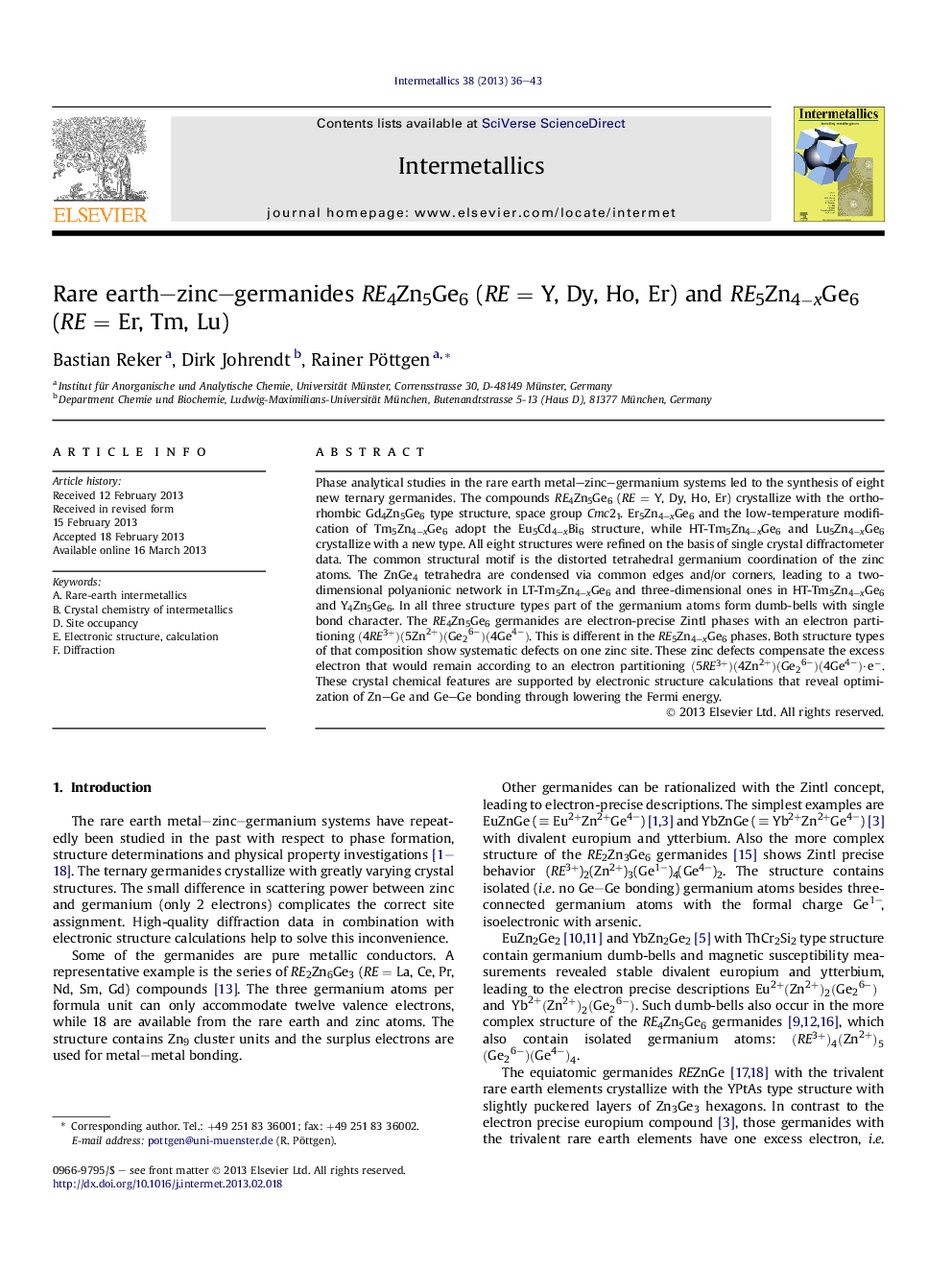| Article ID | Journal | Published Year | Pages | File Type |
|---|---|---|---|---|
| 1600325 | Intermetallics | 2013 | 8 Pages |
Phase analytical studies in the rare earth metal–zinc–germanium systems led to the synthesis of eight new ternary germanides. The compounds RE4Zn5Ge6 (RE = Y, Dy, Ho, Er) crystallize with the orthorhombic Gd4Zn5Ge6 type structure, space group Cmc21. Er5Zn4−xGe6 and the low-temperature modification of Tm5Zn4−xGe6 adopt the Eu5Cd4−xBi6 structure, while HT-Tm5Zn4−xGe6 and Lu5Zn4−xGe6 crystallize with a new type. All eight structures were refined on the basis of single crystal diffractometer data. The common structural motif is the distorted tetrahedral germanium coordination of the zinc atoms. The ZnGe4 tetrahedra are condensed via common edges and/or corners, leading to a two-dimensional polyanionic network in LT-Tm5Zn4−xGe6 and three-dimensional ones in HT-Tm5Zn4−xGe6 and Y4Zn5Ge6. In all three structure types part of the germanium atoms form dumb-bells with single bond character. The RE4Zn5Ge6 germanides are electron-precise Zintl phases with an electron partitioning (4RE3+)(5Zn2+)(Ge26−)(4Ge4−)(4RE3+)(5Zn2+)(Ge26−)(4Ge4−). This is different in the RE5Zn4−xGe6 phases. Both structure types of that composition show systematic defects on one zinc site. These zinc defects compensate the excess electron that would remain according to an electron partitioning (5RE3+)(4Zn2+)(Ge26−)(4Ge4−)·e−(5RE3+)(4Zn2+)(Ge26−)(4Ge4−)·e−. These crystal chemical features are supported by electronic structure calculations that reveal optimization of Zn–Ge and Ge–Ge bonding through lowering the Fermi energy.
► Synthesis of rare earth–zinc–germanides. ► Dimorphism for Tm5Zn4−xGe6. ► Chemical bonding analysis for Lu5Zn4−xGe6.
